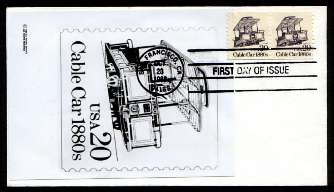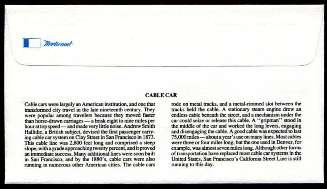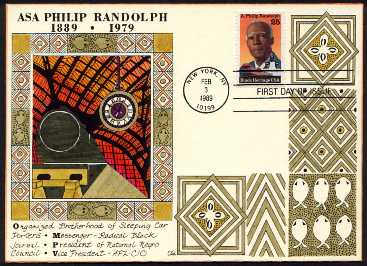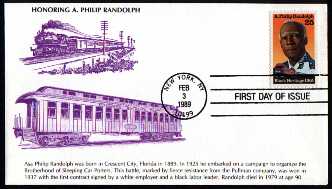
|
<<<< |

|
>>>> |

|

TRAINS ON U. S. STAMPS
and POSTAL STATIONERY
page 8

Embossed postcard with train image - Limited Express |
25¢ A. PHILIP RANDOLPH ISSUE - February 3, 1989
This stamp was the 12th entry in the Black Heritage series, which is one of only two long-term (1978-present) commemorative series the USPS has chosen to sustain. With 48 issues so far, this series is distinguished by the quality and integrity of its designs and subject matter. The Literary Arts series, which began in 1979, has fewer issues - 34 to date - but seems to be alive - its most recent addition was the Saul Bellow issue of 2024. The only other active series of significant length (20 issues to date) is the Legends of Hollywood Series, which was begun in 1995. (Note that I am talking about Commemoratives. There have been larger, longer-lived series of definitives, as well as of Special Stamps such as the Love, and Christmas issues.) Here is an excellent biography of Randolph on Wikipedia.
The Carol Gordon FDC for this issue, above, is graphically very appealing, but thematically a bit confusing to me. I can make out the clock dangling into the design at left, and I assume the black shape with a white circle is supposed to represent the front of a steam locomotive, so maybe the network at the top is the mullioned glass ceiling of a classic train station? The other shapes and figures suggest African tribal art, which would be appropriate to the Black Heritage theme. Not sure, but I like it.
The two FDCs above offer nothing exceptional, but have relevant cachets, are attractive (to my eye), and provide some useful information about the issue. No added philatelic value, but that would be tough on this issue. Perhaps the addition of some other stamp with a postmark that related to the subject somehow?
|
||||||
US TRAINS
|
Send feedback to the webmaster: CLICK HERE
Created -- 03/22/2001
Revised -- 09/07/2005









